
Designing a
Prosocial Classroom
FOSTERING COLLABORATION
IN STUDENTS FROM PRE-K12
WITH THE CURRICULUM YOU ALREADY USE

Christi Bergin

W. W. NORTON & COMPANY
Independent Publishers Since 1923
New York London
A NORTON PROFESSIONAL BOOK
This book is dedicated to you, for caring enough to
create a classroom where children thrive.
CONTENTS
Designing a
Prosocial Classroom
As a professor, my expertise is in how to promote kindness, compassion, and integrity in children. I have often been asked by teachers, including my former students who are practicing teachers, to write a how to book for teachers. Recently a director of a professional development agency told me:
We spend months showing teachers how to create fantastic, problem-based, hands-on, inquiry-oriented, team-centered lessons using technology. Their districts invest heavily in this professional development and in purchasing the technology. We do a good job helping teachers design lessons that will prepare students for 21st-century work.
Yet, when we follow up, we find that many of the teachers are not teaching these kinds of lessons. We ask, Why? The teachers say they tried, but those types of lessons make huge demands on students to get along with each other, and their students dont share, cooperate, or help each other enough. Can you teach the teachers how to help their students learn to be kinder and cooperate with each otherto smooth implementation of their problem-based, team-centered lessons?
This book is a response to requests like this. Before writing, I surveyed teachers, asking what they would like in a book. Their responses were:
Keep it short; I am too busy to read a long book! (This was the most overwhelming response.)
Make it useful; I want to be able to implement what I read immediately in my classroom.
Make it research-based; I want to know that there is evidence to support my teaching.
To honor these requests, Ive done my best to distill a complex research literature into a succinct set of tools that I hope you find genuinely useful.
What is a Prosocial Classroom?
The term prosocial behavior was coined as the antonym to antisocial behavior. Antisocial behavior disrupts the functioning of society. This is a broad definition that can include any behavior that is aversive, annoying, or harmful to others. It includes aggression, bullying, substance abuse, and delinquency (e.g., breaking the law, truancy, vandalism). In contrast, prosocial behavior is behavior that supports the functioning of society. This is also a broad definition that can include any behavior that benefits others or promotes harmonious relationships (Denham, Mason, & Couchoud, 1995; Eisenberg et al., 1996; Eisenberg & Miller, 1987; Fabes, Carlo, Kupanoff, & Laible, 1999; Hay, 1994; Naparstek, 1990). Simply put, prosocial refers to positive interactions and antisocial to negative interactions regarding others. Some psychologists refer to them as moving toward others and moving against others.
 Prosocial behavior is voluntary behavior that benefits others or promotes harmonious relationships.
Prosocial behavior is voluntary behavior that benefits others or promotes harmonious relationships.
A key point is that prosocial and antisocial refer to quality, not quantity, of interactions with others. Some people mistakenly use the term antisocial to mean asocial, nonsocial, or introverted and the term prosocial to mean outgoing, but this is not correct. You probably know an antisocial person who is outgoing (e.g., think of some politicians), and a prosocial person who is quiet and a little introverted (e.g., Beth March in Little Women, or Neville Longbottom in Harry Potter). What identifies a person as prosocial or antisocial is the nature of their interactions with otherskindly or destructivenot how much they interact with others.
Prosocial behavior overlaps with morality. Moral behavior refers to abiding by obligatory, universal laws in order to do what is just and right. Prosocial behavior is morality writ large, but goes beyond it. For example, behaving honestly is both moral and prosocial. However, complimenting another person is not a moral issue involving questions of justice or right versus wrong, but it is prosocial.
Prosocial behavior also includes altruism, but goes beyond it. Altruism is a type of prosocial behavior that benefits someone else at the expense of the self, such as giving up time, fun, or money. For example, when you give up personal time to tutor a student or help a struggling colleague with lesson plans, you are being altruistic. Prosocial behavior can be altruistic, but it can also include behaviors with little cost to self, such as a warm greeting or simply saying, Thank you. Thus, prosocial behavior is a broader concept than morality or altruism.
Prosocial behavior can also sometimes be assertive or paternalistic. Have you ever pulled a toddler away from the edge of a pool even though the toddler wanted to get in the pool? Have you ever made your students do something they did not want to do for their benefit (e.g., revise an essay, or eat their vegetables before dessert)? Probably several times a day! Even 5-year-olds do this. If they are told that chocolate will make another child sick, but the child asks for chocolate, they are likely to give the child fruit snacks instead (A. Martin, Lin, & Olson, 2016). (They will not give carrots instead. Their paternalism has limits!) Prosocial behavior is about genuinely benefitting others, not just doing what others want you to do.
Non-Cognitive Skills and Socioemotional Learning
Prosocial behavior is part of the non-cognitive skills that the U.S. Department of Education (ED) has recently made a priority for research. It is part of EDs college-and-career-ready push. This is because, as Ill discuss in such as ability to collaborate with others, listen actively, manage interpersonal conflicts, and show respect for others (Savitz-Romer, Rowan-Kenyon, Zhangg, & Fancsali, 2014). In another study, hundreds of employers ranked non-cognitive skills as more important than cognitive skills for workplace success (Casner-Lotto & Barrington, 2006). Thus, when you help your students develop these skills, you are helping them become successful well beyond your classroom doors.
Non-cognitive skills refer to things like turning in your homework on time, persistence, organization, communication, getting along with others in your study group, having a good attitude, and obeying the teacher. In contrast, cognitive skills refer to the kinds of things measured on achievement tests, such as the ability to solve an algebra equation or fluently read a text.
The term non-cognitive is dreadful, not only because something so important should not be defined by what it is not, but also because getting along with others and self-control can require a lot of cognition (e.g., reasoning, problem-solving, and pondering). Theyve also been called soft skills, which is just as inappropriate a term, since such skills can be very hard, both hard to develop and hard to enact. Nevertheless, one positive is the word skill, which implies they can be taught and are not simply traits you are born with or not. The purpose of this book is to give you the tools you need to teach important non-cognitive skills to your students, regardless of the level of skills they may bring with them to your classroom.
Next page
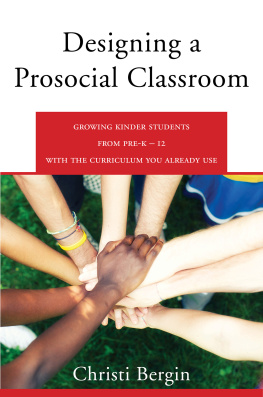
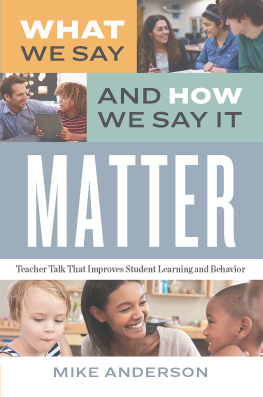
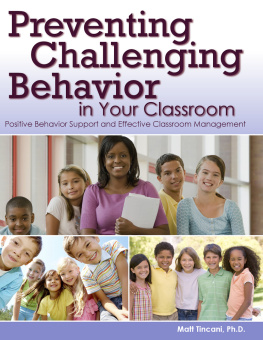


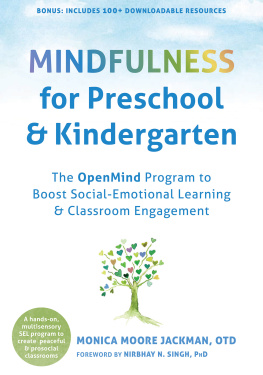
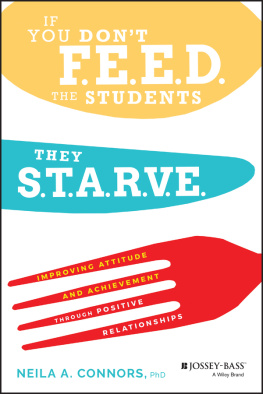
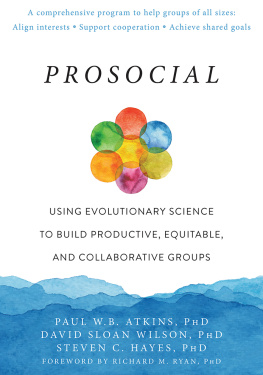



 Prosocial behavior is voluntary behavior that benefits others or promotes harmonious relationships.
Prosocial behavior is voluntary behavior that benefits others or promotes harmonious relationships.